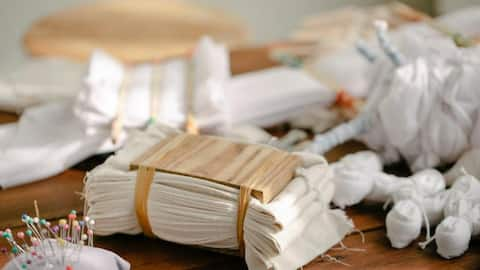Exploring plants that produce sustainable fabric dyes
What's the story
In the world of eco-friendly fashion, the allure of sustainable fabric dyes is undeniable. Nature provides an array of vibrant hues through various plants, offering a palette for environmentally conscious textile enthusiasts. Here we're looking into the beauty and sustainability of fabric dyes derived from plants, with a spectrum of colors that not only adorn fabrics but also contribute to a greener planet.
Blue
Bachelor buttons (Centaurea cyanus)
Bachelor buttons, also called cornflowers, stand as symbols of nature's blue palette. These annual blooms, with globular flowers in blue, pink, and white, contribute to eco-friendly dyeing and serve as edible delights, adorning salads and desserts. A visual treat from spring to fall, these flowers offer an annual ritual for those seeking a perennial source of blue tones in their sustainable dye projects.
Yellow
Goldenrod (Solidago spp.)
As autumn descends, goldenrod blooms, boasting slender, arching stems adorned with vibrant yellow flowers. A favorite among pollinators, this fall-blooming native plant provides an ideal choice for creating warm yellow hues in dye baths. Goldenrod yields a richer color, with alum or iron as recommended mordants. It emerges as the last herald of autumn, offering textile artists a final burst of natural color.
Red
Madder (Rubia tinctorum)
Within the unassuming facade of madder lies the secret to a dye of historical significance. With whorled foliage and inconspicuous yellow flowers, this perennial plant's true magic unfolds beneath the soil. Harvesting roots as thick as a pencil, after two to five years, reveals a vivid red dye. Madder traces back to King Tut's tomb, showcasing its relevance in the world of natural dyes.
Green
Foxglove (Digitalis purpurea)
Foxgloves, with their tubular flowers and distinctive appearance, add a touch of beauty to both gardens and dye baths. These native plants offer leaves and flowers that, when utilized, produce an array of green shades. However, their toxic nature necessitates caution, especially in gardens frequented by small children or curious pets. Foxgloves stand as both a botanical wonder and a responsible choice for dyers.
